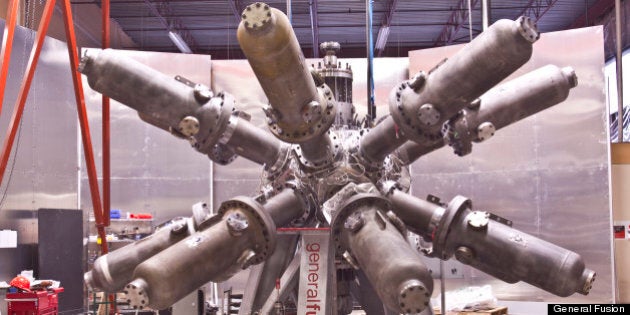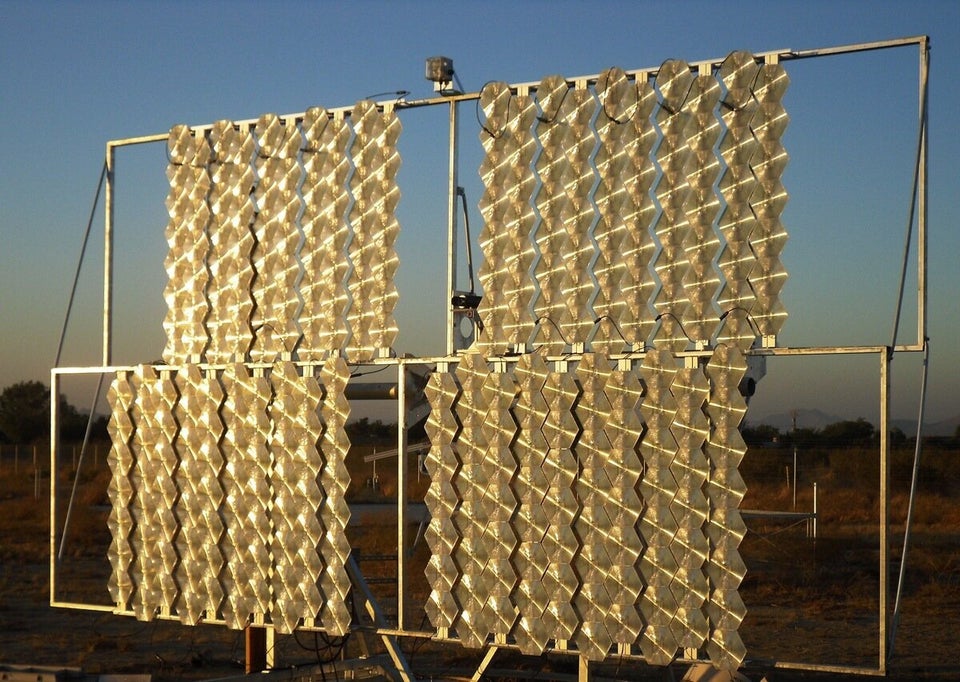
As the world continues to warm at an alarming pace, concerned citizens are growing increasingly frustrated at the lack of political will for action on climate change.
But some Canadian startups aren't waiting for the government to come around, and are pursuing innovations that could -- with luck and the right opportunities -- help to save the world from climate catastrophe.
From underwater energy storage to smarter solar panels, companies from across the country are developing technology that could change the way we live, work and commute.
But risk aversion on the part of Canadian investors makes it difficult for the innovative ideas produced by home-grown startups to make their way into the commercial market.
While Canada consistently ranks in the top 10 in terms of clean tech innovation, many Canadian companies find it hard to get off the ground due to a lack of interest from investors, said Vicky Sharpe, president and CEO of Sustainable Development Technology Canada, a federal government-supported venture capital fund.
“In general we don’t have the capital to build these companies because the risk appetite isn’t there,” she said, adding that Canadian companies get on average about 44 per cent of the capital funding that a U.S. startup receives.
“It’s not until you get the disruptive technologies that can create major markets, or major environmental gains ,that you get what you need, so that hesitancy is problematic.”
There is not enough discussion in Canada about climate change at the corporate and political levels to support Canadian innovations, says Tom Rand, a clean tech investor and adviser for Mars Discovery District in Toronto.
“Basically businesses are not going to solve this problem until the rules of the game make it in their best interest to solve this problem. Business does not operate with idealism, saving the world, goodness of the planet in mind, they operate with profit in mind and they have to.”
He believes a price on carbon is needed in order to convince businesses to step up to the plate and make moves toward battling climate change.
“A price on carbon has nothing to do with the right or the left or politics, it is simply the most effective tool we have in the market economy to solve this problem,” he said.
“Unless you put it into that framework, it’s just neat companies doing neat things.”
Those companies also require more capital from Canadian investors because the alternative is that those businesses will either move to the U.S.,where funding is better, or “die on the vine,” he said.
“That’s why we’re worried about Canadian venture capital -- not just because we want to solve everyone’s problem called climate change but because we also want to create those high value jobs in Canada,” Rand said.
“Companies that are solving the climate change problem are solving the mother of all problems and there’s going to be a commensurate reward for that, and that ultimately is going to be reflected in Canada in jobs.”
Here are nine cool startups working to tackle climate change (text version below slideshow):
Morgan Solar
Solar power is one of the most ubiquitous and renewable alternative energy solutions, but the cost of making the silicon chips that store the energy has been prohibitively expensive.
Toronto’s Morgan Solar provides a lower-cost option to get the most out of expensive silicon chips using refractory surfaces, including lenses, mirrors or prisms, that surround the chip and concentrate sunlight on a very small piece of silicon, helping to lower production costs.
Hydrostor
Much of the energy produced through electricity goes unused during off-peak hours. Hydrostor has a cheap storage solution that would help make energy grids more efficient.
Toronto-based Hydrostor’s technology mechanically converts electricity (produced from hydro, wind, or other sources) to compressed air for storage in underwater accumulators (balloons) at times when grid demand is low. When energy demand spikes, the weight of the water pushes the air back to the surface, where the process is reversed and converted back into electricity. The company boasts the low cost, environmentally-friendly nature of the process.
Borealis GeoPower Inc.
Geothermal energy is a long-term renewable energy source. The problem is, it’s a risky and expensive investment. GeoPower Inc. is a team of experts and consultants that help Canadian geothermal companies that have focused on projects elsewhere, become major players in the Canadian energy market.
The Calgary-based company is a project manager focused on growing the number of geothermal energy projects in Canada. Enhanced geothermal technology drills deep into the ground to harness heat from the inner earth, with near zero emissions. With proper engineering, geothermal systems can run indefinitely. Geothermal has the lowest long-term costs of all alternative energy sources.
BioAmber Inc.
Chemical production is usually a toxic and energy intensive process. BioAmber has developed a way to replace some of the man-made materials used in everyday products with plant-based products.
Montreal’s BioAmber Inc. is a sustainable chemicals maker using bio-based compounds to replace petroleum-based succinic acid with one derived from agricultural by-products. Applications include everything from de-icing agents to cosmetics to food additives.
Ostara Nutrient Recovery Technologies
By-products like phosphates and ammonia in wastewater can clog infrastructure pipes, increasing the energy and cost of pumping the water through.
Vancouver-based Ostara has designed a process that removes phosphates and ammonia from waste, then combines them into a premium environmentally-friendly slow-release fertilizer.
Titanium Corporation
Calgary’s Titanium Corp. could change the way the world views the oilsands, or at least reduce some of the negative side effects associated with the waste by-product tailings ponds.
Its technology removes bitumen, solvents and other high-value minerals at oilsands production sites, keeping it out of tailings ponds, which makes the water easier to recycle for reuse in the extraction process, in turn reducing the amount of water taken from nearby rivers and lakes. The bitumen and minerals are then resold into the market.
Woodland Biofuels Inc.
Ethanol is a greener way to fill up a tank than oil-based gasoline, but has traditionally relied on corn and other sources of food for production. Woodland has found a way to produce ethanol using any type of biowaste (mostly agricultural or wood waste).
Mississauga, Ont.-based Woodland produces cellulosic biofuel by tearing wood chips apart and putting them back together to form ethanol, a cheaper alternative to gasoline. It is also a more sustainable way to create ethanol than the traditional method of using food materials.
General Fusion
Nuclear energy’s label as a clean technology is a very much disputed one. Though it doesn’t produce greenhouse gases, or pollution, it produces toxic radioactive waste that can be dangerous for thousands of years, or spark a meltdown that would release radioactive chemicals into the air.
General Fusion, based in Burnaby, B.C., is developing a safer process for nuclear energy that uses a fusion process, in which isotopes of hydrogen can be extracted from seawater and derived from lithium, rather than uranium or plutonium. Like nuclear fission, which is currently used, the reaction releases a significant amount of energy, but doesn’t have the potential for meltdown, there are no radioactive by-products and fuel is virtually unlimited.
Electrovaya
Transportation is one of the biggest sources of greenhouse gas emissions in the world.
This Mississauga, Ont.-based company’s mission is to make electric powered vehicles a commercially viable alternative to gas with its lithium ion batteries that enable more power to be stored in a smaller space and can be used in various modes of transportation -- from cars to ferries. It also builds storage systems for electricity created by renewable intermittent sources of energy such as wind and solar power.
